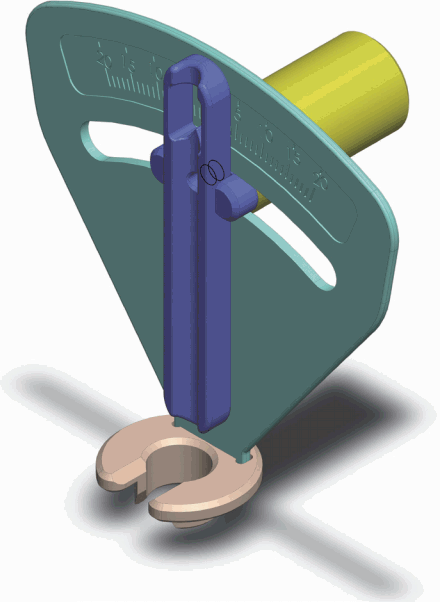1. Abu-Serieh B, Ghassempour K, Duprez T, Raftopoulos C. Stereotactic ventriculoperitoneal shunting for refractory idiopathic intracranial hypertension. Neurosurgery. 60:1039–1043. discussion 1043–1044. 2007.

2. Ann JM, Bae HG, Oh JS, Yoon SM. Device for catheter placement of external ventricular drain. J Korean Neurosurg Soc. 59:322–324. 2016.

3. Azeem SS, Origitano TC. Ventricular catheter placement with a frameless neuronavigational system: a 1-year experience. Neurosurgery. 60(4 Suppl 2):243–247. discussion 247–248. 2007.
4. Bergsneider M, Stiner E. Management of adult hydrocephalus: Shunting. Winn HR, editor. Youmans Neurological Surgery. ed 6. Philadelphia: Saunders;2011. 1:p. 515–524.
5. Clark S, Sangra M, Hayhurst C, Kandasamy J, Jenkinson M, Lee M, et al. The use of noninvasive electromagnetic neuronavigation for slit ventricle syndrome and complex hydrocephalus in a pediatric population. J Neurosurg Pediatr. 2:430–434. 2008.

6. Epstein MH, Duncan JA. Surgical management of hydrocephalus in adults. Schmidek HH, editor. Schmidek & Sweet Operative Neurosurgical Techniques: Indications, Methods, and Results. ed 4. Philadelphia: Saunders;2000. 1:p. 595–603.
7. Ghajar JB. A guide for ventricular catheter placement. Technical note J Neurosurg. 63:985–986. 1985.

8. Gil Z, Siomin V, Beni-Adani L, Sira B, Constantini S. Ventricular catheter placement in children with hydrocephalus and small ventricles: the use of a frameless neuronavigation system. Childs Nerv Syst. 18:26–29. 2002.

9. Huyette DR, Turnbow BJ, Kaufman C, Vaslow DF, Whiting BB, Oh MY. Accuracy of the freehand pass technique for ventriculostomy catheter placement: retrospective assessment using computed tomography scans. J Neurosurg. 108:88–91. 2008.

10. Jung N, Kim D. Effect of electromagnetic navigated ventriculoperitoneal shunt placement on failure rates. J Korean Neurosurg Soc. 53:150–154. 2013.

11. Kandasamy J, Hayhurst C, Clark S, Jenkinson MD, Byrne P, Karabatsou K, et al. Electromagnetic stereotactic ventriculoperitoneal csf shunting for idiopathic intracranial hypertension: a successful step forward? World Neurosurg. 75:155–160. discussion 32–33. 2011.

12. Lind CR, Correia JA, Law AJ, Kejriwal R. A survey of surgical techniques for catheterising the cerebral lateral ventricles. J Clin Neurosci. 15:886–890. 2008.

13. Moran D, Kosztowski TA, Jusué-Torres I, Orkoulas-Razis D, Ward A, Carson K, et al. Does CT wand guidance improve shunt placement in patients with hydrocephalus? Clin Neurol Neurosurg. 132:26–30. 2015.

14. O’Leary ST, Kole MK, Hoover DA, Hysell SE, Thomas A, Shaffrey CI. Efficacy of the Ghajar Guide revisited: a prospective study. J Neurosurg. 92:801–803. 2000.

15. Park J, Son W, Park KS, Kim MY, Lee J. Calvarial slope affecting accuracy of Ghajar Guide technique for ventricular catheter placement. J Neurosurg. 124:1429–1433. 2016.

16. Piatt JH. Hydrocephalus: Treatment. Wilkins RH, Rengachary SS, editors. Neurosurgery. ed 2. New York: McGraw-Hill;1996. 3:p. 3633–3643.
17. Ravindra VM, Kraus KL, Riva-Cambrin JK, Kestle JR. The need for cost-effective neurosurgical innovation--a global surgery initiative. World Neurosurg. 84:1458–1461. 2015.

18. Rehman T, Rehman Au, Ali R, Rehman A, Bashir H, Ahmed Bhimani S, et al. A radiographic analysis of ventricular trajectories. World Neurosurg. 80:173–178. 2013.

19. Rehman T, Rehman AU, Rehman A, Bashir HH, Ali R, Bhimani SA, et al. A US-based survey on ventriculostomy practices. Clin Neurol Neurosurg. 114:651–654. 2012.

20. Schaumann A, Thomale UW. Guided application of ventricular catheters (GAVCA)--multicentre study to compare the ventricular catheter position after use of a catheter guide versus freehand application: study protocol for a randomised trail. Trials. 14:428. 2013.

21. Thomale UW, Knitter T, Schaumann A, Ahmadi SA, Ziegler P, Schulz M, et al. Smartphone-assisted guide for the placement of ventricular catheters. Childs Nerv Syst. 29:131–139. 2013.

22. Wilson TJ, Stetler WR Jr, Al-Holou WN, Sullivan SE. Comparison of the accuracy of ventricular catheter placement using freehand placement, ultrasonic guidance, and stereotactic neuronavigation. J Neurosurg. 119:66–70. 2013.

23. Woerdeman PA, Willems PW, Han KS, Hanlo PW, Berkelbach van der Sprenkel JW. Frameless stereotactic placement of ventriculoperitoneal shunts in undersized ventricles: a simple modification to free-hand procedures. Br J Neurosurg. 19:484–487. 2005.

24. Woo H, Kang DH, Park J. Preoperative determination of ventriculostomy trajectory in ventriculoperitoneal shunt surgery using a simple modification of the standard coronal MRI. J Clin Neurosci. 20:1754–1758. 2013.

25. Yamada SM, Yamada S, Goto Y, Nakaguchi H, Murakami M, Hoya K, et al. A simple and consistent technique for ventricular catheter insertion using a tripod. Clin Neurol Neurosurg. 114:622–666. 2012.

26. Yim B, Reid Gooch M, Dalfino JC, Adamo MA, Kenning TJ. Optimizing ventriculoperitoneal shunt placement in the treatment of idiopathic intracranial hypertension: an analysis of neuroendoscopy, frameless stereotaxy, and intraoperative CT. Neurosurg Focus. 40:E12. 2016.






 PDF
PDF Citation
Citation Print
Print




 XML Download
XML Download